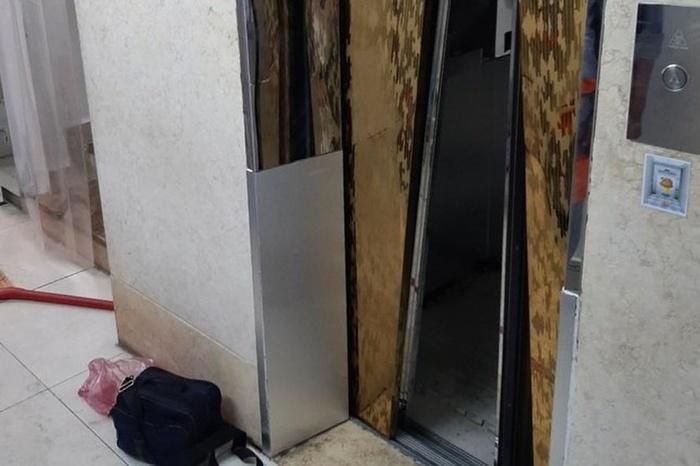EM – My friend – an international student said that when she was a student, she was sometimes “locked” in the elevator of the dormitory. At such times, she is not too afraid because she knows for sure that a rescue team will immediately come to rescue her safely. She even finds such events … interesting to be locked up with some handsome guy.
It’s not uncommon for passengers to get stuck in an elevator.
Let’s find out how the elevator rescue activities is organized.
Elevator rescue is a series of technical activities, starting from receiving information of passengers trapped in the elevator and ending with safely rescuing them from the elevator cabin, while ensuring that the problem is fixed. The elevator continues to operate safely and stably.
Fast and safe!
Thus, the rescue must ensure two factors timeliness and safety. The amount of time for rescuing passengers from the elevator cabins that are stopped between floors is usually not more than 30 minutes (± 10 minutes) from the time rescue team receives requests for help. Therefore, the rescue of passengers must be carried out by qualified on-site forces, who are appropriately trained, have the knowledge and practical experience, and are equipped with appropriate instructions necessary for the safe conduct of the required lift rescue and repair operations.
They are careful, brave and responsible people.

Improper lift rescue or time delay can endanger people trapped in the elevator

Or rescue improperly, without professional expertise, causing serious damage to the elevator, dangerous cabin stuck situation.
With large building clusters, building operators are equipped with professional knowledge of elevator rescue. However, home elevators are increasingly popular, and even buildings contract maintenance services including rescue work with an elevator service company, so elevator rescue will be implemented by the Rescue Teams of these companies.
The professional rescue team is staffed with the number of people with the necessary expertise (such as electricians, mechanics, rescue operators, experts, etc.) to carry out the requirements of the rescue mission and troubleshoot problems taking into account the number, type and model of lifts as well as equipping them with the necessary means, tools and equipment (including vehicle), being ready to work in extreme conditions (electricity failure in buildings, floods, fires, etc.), strict compliance with occupational safety and discipline.
That being said, the responsibility of organizations and individuals participating in the rescue is very great, because activities related to the health, life, and property of customers as well as themselves and their colleagues.
Permanent elevator service companies, with a large enough number of maintenance elevators (thousands of elevators) often organize Rescue Teams at Service Stations stretching across the country according to customer density maps that they serve. The service station is located in a position with the elevator system as the center to ensure the optimal average travel distance to project.
However, most maintenance service companies today have small models, few employees, even companies with only a few people, serving several dozen elevators. Even large enterprises will find it difficult to ensure enough personnel to perform rescue and troubleshooting quickly and safely according to the requirements and wishes of customers, because of the uneven distribution of elevator network they serve.
Currently, the maintenance, repair and rescue of elevators in some companies are being “subsidized” by the revenue from the sale of new elevators. However, when technical services are separated as an independent business, with the current service organization of each enterprise, service prices will be pushed up or service quality must be reduced. Elevator user might need to wait longer for rescue or components replacement or repair.
Vietnam elevator industry with more than 20 years of development, inherited the results of advanced science and technology in the world. Therefore, we are using new elevators. In simple incidents, user or building staff can be trained to rescue themselves with the help of safety technology equipment. Perhaps because of this, neither users nor elevator service companies have paid enough attention to the importance of rescue teams. However, until now and in the future, when the number of aging elevators increases, equipment, components for over 10 years of use are damaged, we will face technical problems that would needs well-trained, reliable people to handle. This is to prevent improper, unsafe rescue leading to more serious situations or danger to people trapped in the elevator. As mentioned above, if elevator rescue team of a specific service company that only serves to rescue the elevators under their management, or not having the authority to save, this will be a huge waste of resources. Imagine, Rescue Team A in Area X travels tens of kilometers to rescue the elevator in Area Y, while Rescue Team B in Area Y moves in the opposite direction. There are busy crews that have to travel from afar, while there is a rescue team ready to go right nearby that is not in use.
Building a platform for all elevator companies, all rescue teams to join, to perform a common task of elevator rescue, in addition to maintenance and repair work are essential.
This helps elevator users to be served quickly and safely; help businesses reduce costs and optimize social resources. Faced with this problem, I think that such association as Vietnam Elevator Association should organize and gather elevator businesses, in accordance with the needs of society, and at the same time performing the right role and mission of Vietnam Elevator Association.
Huy Nguyen



